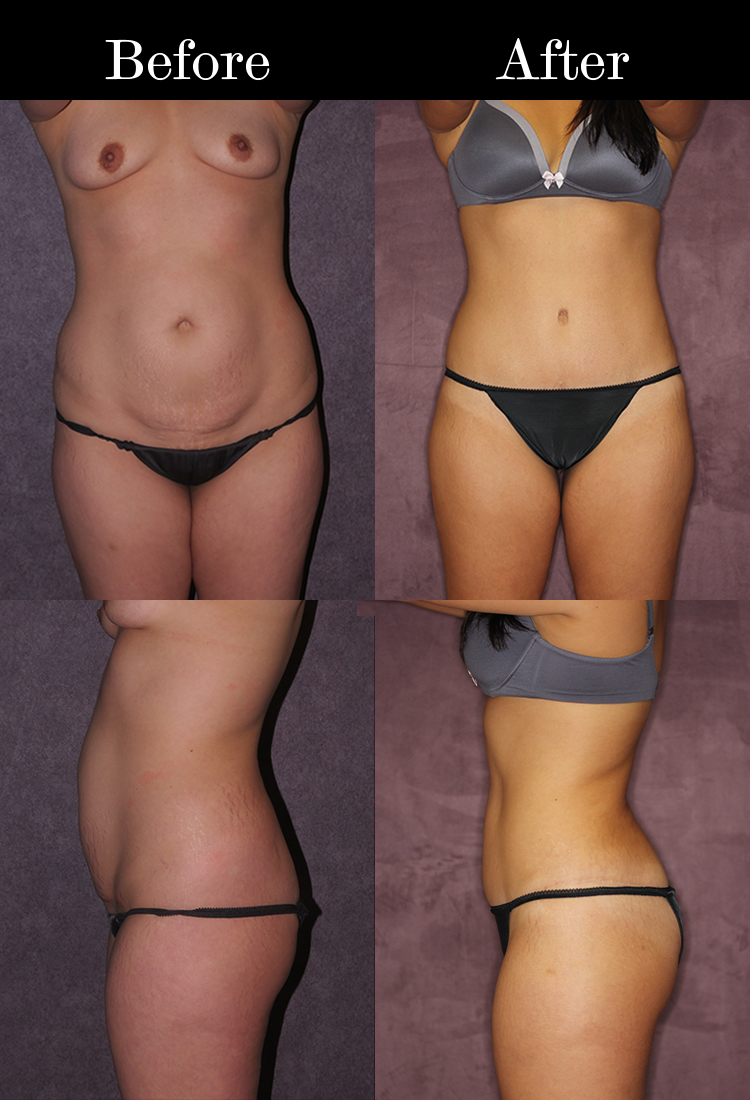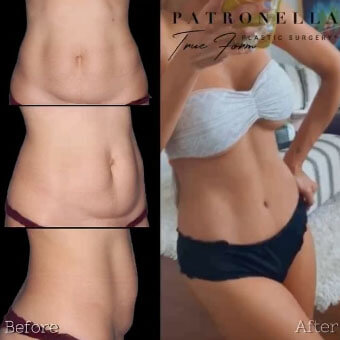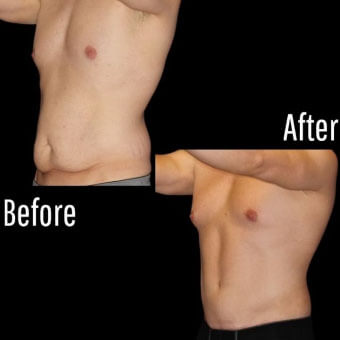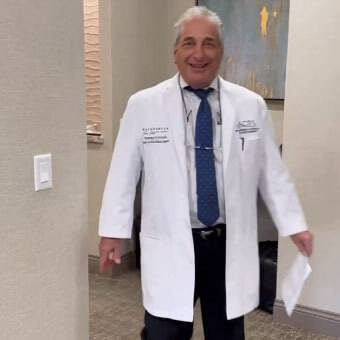The Tummy Tuck Scar and Dr. Patronella’s TRUE FORM ABDOMINOPLASTY® Scar Treatment
Posted September 01, 2020 in Ab Sculpting, Body Contouring, Body Lift, Brazilian Butt Lift, Breast Augmentation, Breast Lift, Breast Reduction, Breast Revision, Brow Lift, Combined Breast Augmentation and Breast Lift, Eyelid Lift (Blepharoplasty), Facelift, Facial Rejuvenation, Fat Grafting, Gynecomastia, Liposuction, Male Plastic Surgery, Mommy Makeover, Non-Surgical Procedures, Plastic Surgeon, Scar, True Form Body Contouring®, True Form Tummy Tuck®, Tummy Tuck, Uncategorized
By Sherri Roberts
sherri@acps.com

This 33-year-old patient had a True Form Tummy Tuck® and body lift with Dr. Patronella. In a tummy tuck procedure, he makes the incision just above the pubic hair line, extending from hip to hip (and extended around to the back for a body lift), which can be concealed beneath a two-piece swimsuit and underwear, as the front “after” view illustrates. Her well-faded body lift scar can be seen just above the underwear band in her “after” side view. The postoperative photos were taken 1.5 years after her surgery with Dr. Patronella.
Top Houston plastic surgeon Dr. Chris Patronella implements a multitiered strategy to achieving the best scar appearance possible from his TRUE FORM ABDOMINOPLASTY® surgery and other cosmetic plastic surgery procedures. It starts in the operating room with the incision and wound healing techniques he uses followed by postoperative products and possibly nonsurgical skin laser treatments, as well.
“Postsurgical scars are an area that is often overlooked in cosmetic plastic surgery, though it is a common concern for patients,” said Dr. Patronella. “We can’t do these cosmetic operations without leaving a scar, so I work hard to develop a treatment plan for my patients that will minimize the appearance of scars as much as possible.” Because scars can take up to two years to fully mature, attentive treatment throughout this process produces optimal conditions for scar healing.
Step 1
Surgery
“Meticulous tissue handling in surgery, multiple layers of closure, limitation on any external (visible) sutures and early removal if present (5 to 7 days), and post-operative incision protection are important requirements for optimizing scar appearance,” said Dr. Patronella. Because high tension (tightness) along an incision can cause poorer scars with widening and thickening, Dr. Patronella is meticulous in measuring the ideal amount of skin to remove in order to achieve ideal contours without compromising the incision line with excessively taut skin and sutures.
At the conclusion of a procedure, he places a wound glue on the incision to protect it from possible external contaminants. This glue is a waterproof seal which allows patients to shower the day after surgery. When the glue is in place, no additional incision care is required. Because infection rate is lower when the glue is used, this improves the conditions for favorable scar healing and its subsequent appearance. The glue remains protective for 4 weeks until it is removed.
Step 2
Recovery Phase
In addition to the protective glue, infection can be avoided by allowing adequate time for healing without placing additional strains upon the incision through exercise, lifting, and stretching across the incision line.
Step 3
Postoperative Scar Treatment
Dr. Patronella instructs his patients to begin his topical Scar Therapy Program at four weeks after their surgery when the wound glue is removed. This regimen consists of the following:
- A potent moisturizing cream which contains growth factors, antioxidants, and matrix proteins including collagen
- Retinol to exfoliate the scar surface
- Silicone ointment to flatten the scar
Topical bleaching cream can also be added when hyperpigmentation (darkening) occurs in patients prone to this condition, most commonly seen in those with darker skin pigmentation.
This treatment program is continued daily for 9 to 12 months until scar appearance fades. For patients who desire and/or require added diminishment of scar appearance, Dr. Patronella may recommend laser and broadband light treatments. Various wavelengths can focus on different elements of a scar, reducing redness or hyperpigmentation.
Other Factors Which Influence Scar Appearance
Unique characteristics and genetic influences
An individual’s scar healing history is often predictive of future scar characteristics. For example, a person who has a history of thick, hypertrophic or keloid scars suggests the same will likely occur with any subsequent scars. Likewise, a person whose scars are thin, flat, and blend in well with surrounding skin will typically experience a similar outcome with future scars.
Age
Generally, the older one is, the more inconspicuous any scar will be. Teens tend to form the most obvious scars.
Skin complexion
Darker skin people sometimes, though not always, will form pigmented and thicker scars.
Dr. Patronella takes all of these variables into consideration in developing a scar treatment plan which best meets the needs of an individual. Attentiveness to such details can make a dramatic difference in the appearance of postsurgical scars. And this element contributes to Dr. Patronella’s overarching goal: the creation of attractive, natural-looking results that exceed his patients’ expectations.
We invite you to contact us today to schedule an in-office or virtual consultation with Dr. Patronella.







